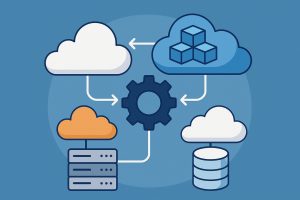Setting a Custom Favicon in Your Spagic Middleware Interface
A software application’s user interface is more than just a tool for functionality—it also serves as a visual identity for the system. In the case of Spagic Middleware, a modular platform used for service integration and orchestration, visual branding plays a vital role in delivering a polished and professional experience to users. Among the most overlooked yet impactful elements of this branding is the favicon—the small icon that appears in a browser tab, bookmarks bar, or while switching between browser windows.
Although seemingly minor, the favicon carries significant weight in user perception and environment recognition. For teams managing multiple Spagic environments such as development, staging, and production, custom favicons can serve as intuitive visual cues to help distinguish between instances. This reduces user error, enhances usability, and promotes a more organized workflow—especially in enterprise setups that require frequent context switching between services.
Creating a personalized favicon is a straightforward process when using a dependable favicon maker. By designing a favicon that reflects your project or company’s brand, you reinforce identity every time the interface is accessed. It’s a small branding effort that goes a long way toward boosting recognition and professionalism across the integration platform.
The Role of Favicons in Spagic Web Interfaces
Favicons often go unnoticed until you realize you need them—they appear in the browser tab, bookmarks, or when alt-tabbing between windows. In Spagic Middleware, commonly used by developers and integration specialists, the default favicon may not reflect the branding of a company or project. That’s why many teams choose to personalize it.
With a custom favicon for each Spagic deployment, users can easily distinguish which environment they’re working in. For example, using different favicons for development, staging, and production helps avoid confusion—especially useful when managing multiple simultaneous deployments.
Beyond identification, favicons also contribute to professionalism. In client-facing interfaces or dashboards used by various teams, having a properly branded favicon reflects the quality of your system. It’s a small step that shows attention to detail and enhances user experience.
Preparing a Custom Favicon for Integration
Creating a custom favicon is simple but requires correct sizing, format, and compatibility. Typically, the .ico format is preferred as it is widely supported by browsers. However, .png files can be used for more modern browsers.
For best results, design your favicon in 32×32 pixels or 64×64 pixels. You can create one using image editors like GIMP or Photoshop, or use an online favicon generator. Make sure the background is transparent for a cleaner appearance.
Once your icon is ready, name it clearly—favicon.ico is the default filename. It’s also good to include proper metadata for high-resolution displays, especially if your application supports retina icons.
Adding the Favicon to Your Spagic Deployment
With your favicon file prepared, the next step is placing it in the correct directory of your Spagic installation. The typical path for web assets in Spagic is under the webapps folder, which contains the static files accessed by browsers.
Place your favicon.ico file in the root directory of the web application. For example, if your Spagic instance is accessed at http://yourserver/spagic-console, the favicon should be placed at spagic-console/favicon.ico. This way, the browser will automatically load the new icon when the page is opened.
Due to browser caching, new favicons may not appear immediately. You can use cache-busting techniques, such as adding a query string to the favicon link (favicon.ico?v=2) in the HTML header, to force the browser to reload the icon.
Editing the HTML Template of the Console UI
The Spagic console interface contains static HTML pages that can be modified to include your custom favicon. To do this, you’ll need to edit the <head> section of the HTML or JSP template file of the console.
Find the line containing <link rel=”icon”…> and replace the path with your new favicon. For example, if the icon is in the app root, use:
<link rel=”icon” href=”favicon.ico” type=”image/x-icon”>.
Be sure there are no typos in the path.
After editing, save the file and redeploy the application if needed. You may also need to restart the application server to ensure the changes are fully applied—especially when modifying core UI assets.
Troubleshooting Favicon Issues
Sometimes, even after updating the favicon, it doesn’t display properly. A common reason is browser cache. Try clearing your browser cache or use an incognito/private window to check if the favicon loads.
Another issue could be an incorrect file path. Verify the icon is in the correct directory, and ensure there are no server-side redirects or access rules that block the favicon request. Use browser developer tools to inspect favicon requests and see if any errors are returned.
If using a symbolic link on a Linux-based server, ensure the file permissions are correct and the symlink is properly pointing to the icon file. In some cases, copying the file directly rather than using a symlink is safer to avoid access problems.
Considerations for Multi-Tenant Environments
If your Spagic instance is used by multiple users or teams, consider enabling a separate favicon for each tenant or group. This can be done using a theme folder or dynamically rendered templates.
You can use logic in the web app to load the appropriate favicon based on session info, hostname, or configuration settings. While this approach is more advanced, it’s worth it if you need visual separation between user groups or projects.
Having distinct favicons for different tenants also helps users visually identify their environment—especially when multiple tabs are open for various deployments. No need to open each tab to see which context you’re in.
Security and Maintenance of Favicon Assets
Although a favicon is a small file, handling it properly still matters for security and maintainability. Avoid leaving unnecessary or outdated icon files on your production server. Remove unused versions to prevent confusion or outdated references.
Ensure correct file permissions for your favicon. It should be readable by the web server but not editable through the public-facing interface. For Linux systems, chmod 644 is typically sufficient for read-only access.
Also consider versioning your favicon filenames for easier updates. Instead of overwriting favicon.ico, use versions like favicon-v1.ico, and update the HTML <link> reference when releasing new icons.
Browser Compatibility for Favicons
Different browsers handle favicons in various ways. Older browsers like Internet Explorer only look for favicon.ico in the root directory. Modern browsers like Chrome, Firefox, and Edge support explicit link tags in HTML to specify icon paths.
To support more devices and screen types, consider providing multiple favicon sizes—like 16×16, 32×32, 64×64, and 128×128. You might also include an Apple Touch Icon for mobile bookmarks, which can be added as an extra asset if needed.
With proper configuration, your favicon will display consistently across all platforms—from desktop browsers to mobile web apps. It’s a small but impactful detail that adds polish to your user interface.
The Value of Branding in Integration Platforms
Visual branding often goes unnoticed, but it has a big impact on systems used daily. In Spagic Middleware, having a custom favicon reflects well-managed integration practices. It conveys professionalism and attention to configuration quality.
A favicon signals attention to detail. When branding is consistent from the login page to the browser tab, users feel more confident using the system. In enterprise contexts, visual trust directly affects adoption and productivity.
Users also navigate more efficiently with visual cues. From development to production, simple yet effective favicon customization improves overall system usability.

